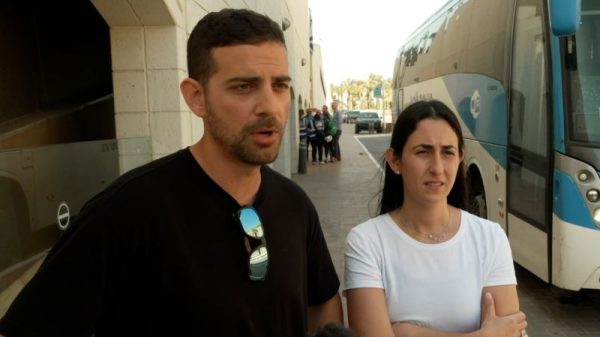If there is not a rule of thumb dictating that any discussion of the internet must necessarily include some surreal element, there should be.
Monday’s oral arguments at the Supreme Court in NetChoice, LLC v. Paxton, a dispute over the ability of states to impose constraints on social media companies, were no exception. There was a reference to the “Sir, this is a Wendy’s” meme, which amazingly spurred no questions from the justices. And then there was Justice Samuel A. Alito Jr.’s effort to determine the extent to which the rules that apply to a newspaper should apply to history’s largest collection of videos.
“Let’s say YouTube were a newspaper,” Alito asked the attorney for NetChoice, “how much would it weigh?”
Those with an old and sufficiently internet-poisoned memory may slot this into the nation’s long history of people in positions of power not understanding the basic mechanics of how things work. In 2006, then-Sen. Ted Stevens (R-Alaska) analogized the internet to a “series of tubes,” which, while not entirely inapt, certainly misses the scale at play. Alito’s comment seems to fall into the same category: Yes, YouTube publishes content, but not really in a way that’s comparable to something like The Washington Post.
In fairness to the justice, he wasn’t actually trying to suggest that the two were comparable. Instead, he was trying to evaluate whether YouTube and similar platforms could be analogized to newspapers in how they curate and present content. The attorney for NetChoice, arguing against limits placed on social media companies by laws passed in Florida and Texas, was arguing that the Supreme Court’s decision in Miami Herald Publishing Co. v. Tornillo might serve as a useful precedent for the court. (The Wall Street Journal editorial board agrees.) Alito was musing about the difference in the scale of what the Herald could produce for its audience relative to YouTube.
But this is the internet, and the reason discussions of the internet collapse into surreality is that surrealism is the coin of the online realm. So it seemed fitting to try to answer Alito’s question: If YouTube were published as a newspaper, how much would it weigh? How many trucks would we need to carry those papers to subscribers?
We need to begin by considering how big YouTube is.
As it turns out, there’s recent scholarship on this otherwise obscure figure. A team of researchers at the University of Massachusetts Amherst created a methodology that allowed them to compile figures estimating the scale and nature of YouTube on an update basis. We learn from their real-time data website, tubestats.org, that there are somewhere north of 14.4 billion videos on YouTube, with more than 412 million already uploaded this year.
But we don’t simply need to know how many YouTube videos there are, any more than we need to know how much storage space they occupy. We need to know what that content would look like when presented in a newspaper format.
So we need to know at least two other things: How many of those videos include spoken content and how long those videos are. (We’ll deal with videos without spoken content in a moment.)
Happily, the researchers have estimates for both. On average, they estimate, YouTube videos are about 615 seconds long. That’s the average, skewed upward by very long videos (the majority of which, according to a 2006 study were “full length, copyrighted videos from TV shows and movies”). The median duration of videos is 61 seconds. But we’re trying to figure out the total for our newspaper here, so we’ll use the average. Multiply the average duration by the number of videos and you get the total playtime of every video on YouTube: about 281,000 years.
The researchers estimate that about 54 percent of the videos they evaluated included spoken language in the first minute. You can see how tricky this all is: The movie WALL-E doesn’t have any spoken language in its first minute, but it certainly includes a lot of dialogue. But we work with what we’ve got, and since The Post is probably not going to pay me to spend 281,000 years watching YouTube, we’ll just assume that about 54 percent of videos include spoken language and, less defensibly, that the speech continues throughout the video consistently.
Why is that necessary? Because we need to figure out how many words are spoken if we’re going to plunk this stuff onto newsprint.
People tend to speak about 150 words a minute. In English, anyway. Which presents a whole different set of problems that we’re going to ignore: how to deal with non-English-language videos. The research team’s assessment of the videos it surveyed found that English was the most popular language used, appearing in 20 percent of the sample videos. That was followed by Hindi, Spanish and … Welsh. (“It is unlikely that Welsh is the fourth most common language on YouTube,” their report notes.)
For our purposes, the language used would mean shifts in what can appear in print. Chinese and, well, Welsh use different amounts of space in print. So we’re just going to pretend that all of the content is translated into English spoken at the above per-minute rate.
We end up discovering that there are about 7.8 billion videos on YouTube with speech, running about 4.8 trillion seconds. That gives us an estimate of just shy of 10 trillion words.
But we’re talking about a newspaper here! Newspapers do not publish every item of news every day, just the new news. (Hence “news.”) So we really only need to look at the 7.2 million videos published each day this year, 3.9 million of which have spoken language. That’s about 2.4 billion seconds of speech, or about 5 billion words.
Great. Now we can turn to the question of how much those newspapers would weigh.
A review of Tuesday’s Washington Post — the premiere example of newspapers, obviously — shows that there are about 1,700 words on the front page and about 3,100 words on a page with only a photo or two. This is our kludge for dealing with videos that don’t include spoken content: Instead of estimating how many words crafting descriptors for those videos would entail, we’re just going to assume they can be summarized visually. Given that nearly half of the videos are image-only, we’ll use our image-heavy front-page word-count estimate here.
So how much does a newspaper weigh? Well, one can look just at the cost of the paper itself, but that misses out on the ink. That depends on the content: More photos means more ink and more weight, albeit in small measure. Multiplied by the billions, though, small measures add up.
Since this is all back-of-the-envelope, let’s use the back-of-the-envelope estimate of a newspaper’s weight generated by Reddit user “mantra” in 2012. He came up with an estimate of 18.4 grams (0.04 pounds) for a lightweight sheet of newsprint and another 12.5 grams (0.028 pounds). That’s just under 31 grams per sheet, or 0.068 pounds.
There are four newspaper pages to a sheet, as you will notice if you pull your newspaper apart. So now we can do our math.
Our 5 billion words of daily YouTube output, matched with lots of photos, would yield about 2.9 million front-page-style pages of content. That would be just north of 50,000 pounds of newspaper.
Or, put another way, to get your newspaper delivered to your house each day, you’d see two semis pull up, one of which disgorged its entire contents and the other of which dropped off a tenth of what it had in its cargo space. If you wanted to get the entirety of YouTube delivered to your house, it would weigh about 100 million pounds, about 85 percent the weight of the Titanic. There would be a line of more than 2,200 trucks lined up to drop them off, a line of trucks stretching more than 30 miles, bumper-to-bumper.
All of this depends on our cop-out of mostly ignoring videos without speech, of course. This makes some sense, given that Alito’s focus was on editorial content in a newspaper. But we can also do some quick calculations centered on the non-spoken-word videos.
Let’s assume we want to include in our paper small stills to convey each video’s content. In a given day, we can estimate that there are about 3.3 million videos with no speaking, lasting about 34.2 million minutes. The normal frame-rate for a video is about 30 per second, but let’s just pick out half that many for economic purposes. That’s still 30.8 billion frames that we’d need to display in our newspaper.
If we print them in an aspect ratio of 4:3 (the ratio used on television) and at a half-inch wide, we can fit about 4,300 stills on one page (allowing for extra space at the edges of the sheet). That’s 7.2 million pages, or 1.8 million four-page sheets. These are heavier, since they’re all ink — totaling about 321,500 pounds. Add in 27,500 pounds for our now picture-free pages of spoken-word videos and the total is about 350,000 pounds of newspaper a day. Eight trucks pulling up to your house and dumping tons of newsprint on your driveway.
The irony to all of this, of course, is that most people receive The Washington Post (and the Miami Herald, for that matter) not in paper form but online, where the weight, like the weight of a YouTube video, has no real meaning. Newspapers are still limited in what they can drop off at people’s houses — which was Alito’s point — but they are not functionally limited in what they can present to readers online.
Put another way, the weight of this article is the weight of the phone in your hand right now (assuming that’s how you’re reading). If you read another article, the cost incurred isn’t in your phone’s weight but in the cost to The Post in hosting and retrieving the content.
Sort of like YouTube.







































